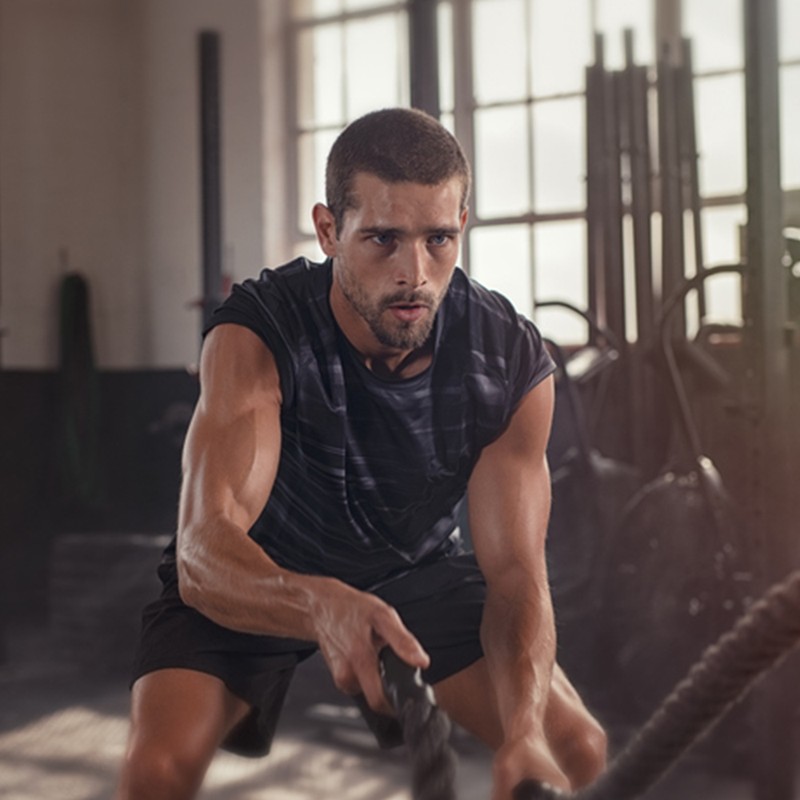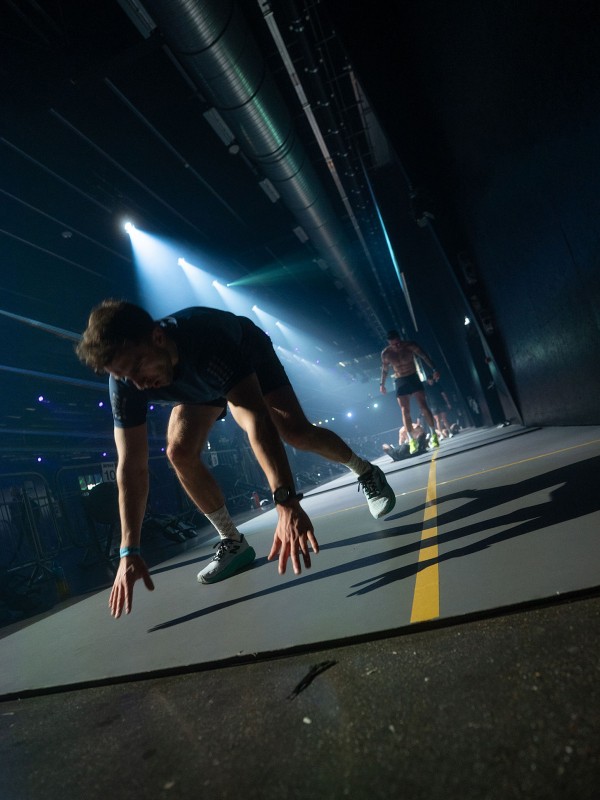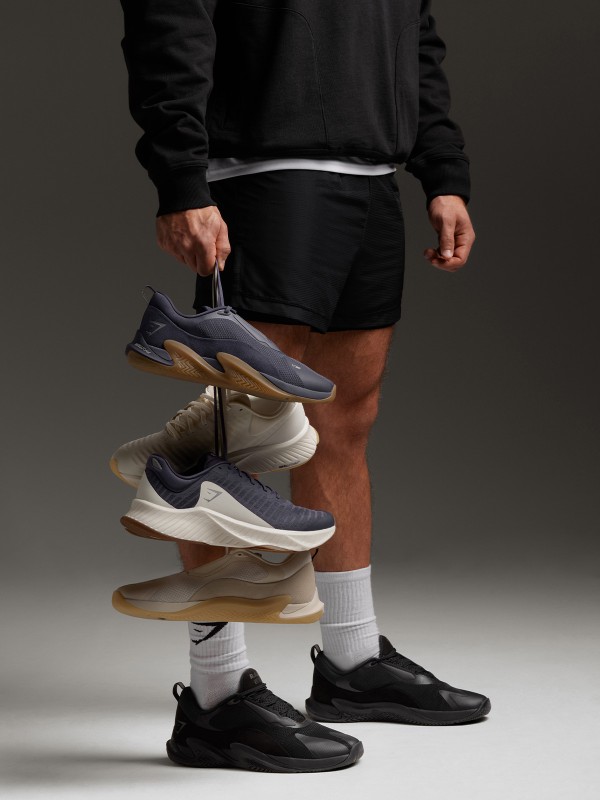Pro Tips For Maximising Your HIIT Workout
Understand The Benefits
Pushing yourself through a HIIT session is no easy feat – it should feel tough. But it’s worth understanding precisely why you’re pushing yourself in this way. As David Wiener, training specialist at Freeletics, explains, “Studies have shown HIIT has great benefits on your metabolism, and is also incredibly beneficial for those looking to reduce body fat, or who are worried about fat stored around their middle, which could indicate higher insulin levels. Insulin is the hormone that regulates levels of glucose in the blood. The healthy stress your body undergoes during a HIIT session triggers autophagy –the process your body goes through to clean out damaged cells and regenerate new, healthier ones. This helps the body achieve optimum health, as well as being anti-ageing.”
Get The Ratio Right
HIIT goes against the notion of workout time equalling results. In fact, experts agree the most effective HIIT sessions are short and sweet. As David explains, “HIIT workouts are split into a short intense level of exercise followed by a period of rest. Usually it’s 20 seconds on, 10 seconds off; 30 seconds on, 30 seconds off; or 45 seconds on, 15 seconds off, with each session lasting anywhere between 20 and 45 minutes.” Don’t be tempted to make your workout any longer than this, David says, as you’ll negate the benefits. “One of the biggest mistakes people make during HIIT training is doing longer sessions, but not working out at their highest potential. A HIIT session that lasts an hour or more is pointless as your intensity will taper off towards the end.”
Monitor Your Heart Rate
Keeping your heart rate high is key for an effective workout. “It’s always worth monitoring your heart rate during HIIT,” David advises. “This is because it will motivate you to go harder. For the best results, your heart rate should be 70-90% of your maximum heart rate (220 minus your age) when you’re working. In your rest periods, your heart rate should be 50-60% of your maximum. Don’t let your heart rate drop too low, though, as you’ll burn more calories while it’s high.”
Don’t Overdo It
However tempting it may be to smash out a quick 20-minute HIIT session day in, day out, the intensity of HIIT and the recovery required for optimal results means it’s better to scale back. “Two to three times a week is sufficient for HIIT training,” says Alex Rogers, PT and founder of Chelsea Fitness Club.
Boost The After-Burn Effect
Feeling hot and sweaty hours after a workout? It’s all down to excess post-exercise oxygen consumption (EPOC), which kicks in after an intense session, boosting your metabolic rate and burning calories for hours afterwards. “EPOC is known as ‘afterburn’ and refers to the increased rate of oxygen in the body following exercise,” explains Alex. “To boost your EPOC and make your workout epic, think about eccentric movements (exercises that lengthen muscle under tension) – this could involve, for example, performing the lowering phase of a squat for a count of three and coming up for one. Also consider pushing at supramaximal power – aka your top training zone – which results in dramatic changes to the metabolism and EPOC. Working out at this intensity would entail only two 20-second intervals at supramaximal power (that’s everything you’ve got) with a three-minute rest in between. This kind of intensity burns glycogen stores within the first ten seconds on your first sprint.”
Don’t Work out On An Empty Tank
“There are conflicting views over whether you should eat before a workout,” David says. “But the science is that your body requires energy to move, so working out fasted will be harder on the body than if you have something small to eat, even if it’s just a piece of fruit.” Refuelling is also important, and David stresses that staying hydrated is crucial: “Without enough water, your muscles won’t get the electrolytes they need to maintain balance, which results in weakening strength and control.”
Invest In The Right Kit
While you can’t go wrong with your own bodyweight when it comes to HIIT at home, it could be worth investing in some kit to increase the variety in your workout. “I am a huge fan of resistance bands – they’re a great way to warm up and work out. You can also do a lot with just one kettlebell or one dumbbell – unilateral and bilateral training is superb as it promotes balance and posture alignment,” says Alex. David is also a fan of dumbbells, but says you should be wary of going too heavy, which can increase your risk of injury, especially when working at such a fast pace.
Prioritise Recovery
“It can take anywhere from 12 to 72 hours for the body to recalibrate post-workout. The body first works to heal inflammation before it can get to work on repairing muscle fibres,” Alex says. “For our body to adapt and change after a workout we need rest – this is when the magic happens. It’s important not to be too fixated on calorie counting after a workout as your body is always burning fat and glycogen stores and/or breaking down muscle fibres, so good nutrition is key.” If you’re suffering from a severe case of DOMS (delayed onset muscle soreness), Alex recommends a hot bath with St John’s wort, salts and oil. “Supplementing with glutamine, an essential amino acid, is also good for DOMS as it can help repair damaged tissue.”
Know When It’s Time To Level Up
If you’ve been doing the same HIIT workout for the duration of lockdown, it could be time to mix it up. “If your HIIT training is becoming mundane, Tabata is a great alternative,” suggests David. “Tabata is the most advanced and intense version of HIIT. It involves 20 seconds of activity followed by just ten seconds of rest. It’s usually done for eight rounds and lasts for four minutes. Four minutes might not sound like much, but as you have to give 100% during the workout periods, it’s not uncommon to be completely breathless and seeing stars by the end. It’s one of the most effective workouts in the HIIT category for burning body fat.”
Visit Freeletics.com and follow Alex on Instagram. You can also find her teaching live classes at KXU On Demand.
*Features published by SLMan are not intended to treat, diagnose, cure or prevent any disease. Always seek the advice of your GP or another qualified healthcare provider for any questions you have regarding a medical condition, and before undertaking any diet, exercise or other health-related programmes.
DISCLAIMER: We endeavour to always credit the correct original source of every image we use. If you think a credit may be incorrect, please contact us at [email protected].






